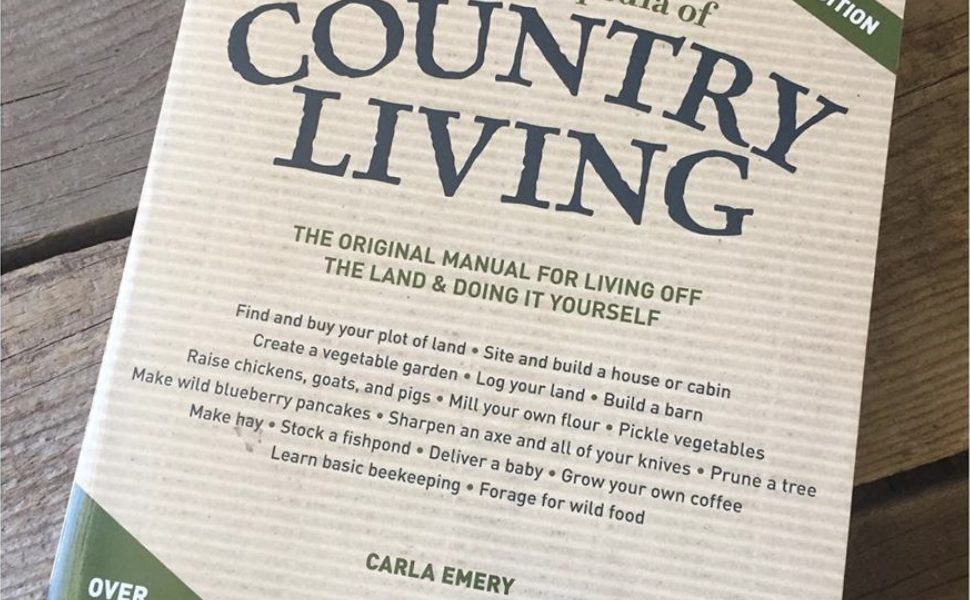“The Encyclopedia of Country Living” by Carla Emery
Need a great book to cozy up with during this coming chilly season? A book you will reach for again and again? Find yourself a copy of this hulk of a resource, “The Encyclopedia of Country Living” by Carla Emery! A 900+ page collection of how-to’s, diagrams, anecdotes and good old country wisdom on just about anything you can think of in relation to living like a pioneer. The ultimate guide for living off of, and in harmony with the land.
Carla began writing this book in 1969 as a helpful guide to hold in your hands and be able to pass on. In her words: “The ‘Back to the land’ movement had started happening then – a tremendous out-migration from cities to country. I was living in a tiny town in Northern Idaho, and the newcomers were everywhere, full of urgent questions about growing plants and raising animals.” Her original book from that time has grown and changed over the ensuing decades, with many contributions from others. The honest goal of helping generations of her fellow man and woman reclaim that oh so important knowledge is felt throughout. Knowledge that reads just as if it were being told to you by a loving grandparent on your front porch, or over a batch of slow cooking apple butter with a friend, or while helping to square the posts on a much needed fence line for a neighbor.
I turn to this book often, and never close it without learning something new and adding a new bookmark. Even after having owned it for a number of years. It’s got a little bit of everything! From finding your land, to working it, to making it a Home full of family. To raising all manner of livestock from baby to butcher. To growing and harvesting then cooking and preserving almost everything, from seed to pantry to table. Including foraging and hunting! It’s a fantastic resource, for anyone, no matter what stage of homesteading you find yourself in. Crack it open on just about any page, and you’re sure to gain insight into the kind of true self-sufficiency you’d never even thought yourself capable of.
Take it from another wise Beartarian, on the Eastern side of our great land, Mohawk Farmer Bear:
“That’s a great book. Tons of practical info. Every homesteader should have one…It’s a book the Bears should know about.”
Mohawk Farmer Bear
Our Western Beartarian homestead wholeheartedly agrees.
Enjoy, and Onward!
– Breanna
@ameliaameliorate on IG




